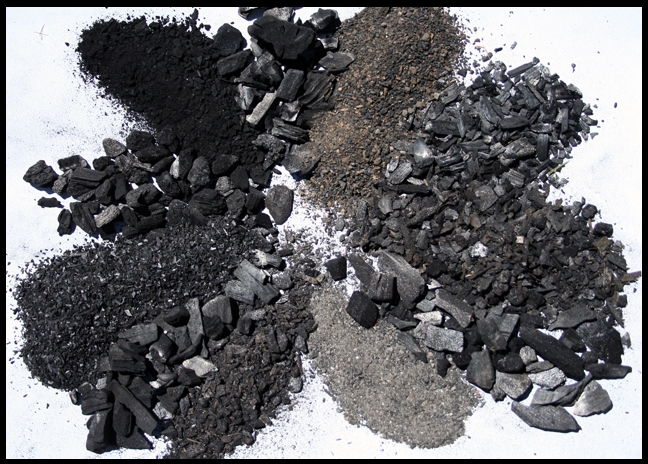New database captures the benefits of biochar
The origins of interest in biochar, a charcoal-based soil amendment, are almost mythic in nature. In the Amazon Basin, a rainforest region with typically infertile soils, segments of soil have been discovered to be almost black in color and rich in nutrients. The soil’s color is derived from its high organic matter content, believed to originate from historical charcoal applications added to the soil some 2,500 years ago, either intentionally or as a waste product from cooking.
Recently, there has been a growing interest in whether the fertility of these “amazon dark earth soils” can be replicated in modern farming practices, and a new UC Davis database helps users and researchers better understand that replicability.
The charcoal, called biochar when used as a soil amendment, can be derived from nearly any biomass, transforming waste products into this unique additive. Increased bio-fuel production and increased fruit and nut crops in California produce a growing supply of waste that has rich potential as a nutrient. Wood, chicken manure, the residue of corn plants after harvest, and nut shells are all common candidates for biochar, each cooked down in a low- or no-oxygen environment into brittle charcoal and added to soil.
The claims of biochar’s ability to improve soil are vast. Biochar proponents say its addition to soil can increase carbon storage, increase the nutrient and water retention of soils, and reduce the greenhouse gas emissions from soils.
“The basic premise of biochar’s benefit is straightforward,” says Sanjai Parikh, assistant professor of soil chemistry in the Department of Land, Air and Water Resources at UC Davis. “You are putting highly condensed carbon in the soil, so that biochar itself has a longer residence time that just putting a piece of wood, or any raw biomass, in the soil. The fact that biochar is a fairly recalcitrant form of carbon means that microbes cannot utilize it easily as food source and carbon dioxide emissions are thus temporarily reduced. However there is also a lot of excitement around the potential of biochar to also provide a host of specific agronomic benefits.”
But as a relatively young avenue of scientific research, conclusive evidence of its benefits is largely inadequate. To drive forward the understanding of biochar, Parikh, along with postdoctoral scholar Fungai Mukome have created the UC Davis Biochar Database — a forum dedicated to comparing the physical and chemical properties of biochar based on the various sources used to make them, and through that generate a broader understanding of the replicable benefits biochar can bring to soil.
“With our database we’re hoping to provide some of the basic data to the biochar community to link these benefits with specific biochar feedstocks and processing temperatures,” Parikh said.
The database, funded in part by the Agricultural Sustainability Institute at UC Davis, can be used as a resource for biochar researchers, manufacturers and users to better understand the effect that different biochars have shown in soil. Users can begin to tailor their biochar systems to better reflect the advantageous results that have been shown in biochar research. And for those studying the benefits of biochar, the database serves as an open source community that biochar researchers can add to in order to develop a comprehensive guide to the research.
“We released the database with 80 entries, and currently have over 300, but our goal is to grow the database to include 1,000 entries within a year,” Parikh said. “There needs to be a place to come to understand the properties of biochar, and opening the forum for community contributions is an important way to expand our knowledge.”
The biochar database can be visited at biochar.ucdavis.edu and contains instructions on how to download data, and how to contribute to the database by uploading data on biochar chemical and physical properties.
Comments:
We plan to continue to grow the database, both in the amount of data and in the way the data can be used. We have begun discussions with IBI to determine how we can best serve the wide variety of biochar stakeholders. The idea of connecting with IBI certification labs would certainly have benefits and we will look into it. At present we do not plan to link biochar physical and and chemical properties to optimal use. The main reason for this is that it is not typically clear cut that one biochar is superior to another due to the impact of soil type, climate, and cropping system. With that said we are interested in this idea and our research continues to explore this. We are currently seeking funding to expand and improve on the UC Davis Biochar Database to incorporate these and other improvements.



Are there any plans to link to the handful of labs that are performing IBI Certifications in the US or are you collaborating with the growing number of universities doing research on different types of biochar?
Also do you have plans to map characteristics to optimal uses for specific biochars such as water holding capacity, CEC, organic material, remediation, climate change mitigation, etc?
Posted by Biocharro on July 17, 2013 at 7:53 PM